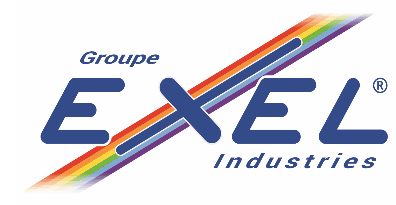HOW TO DESIGN an AUTOMATIC SOLUTION ?
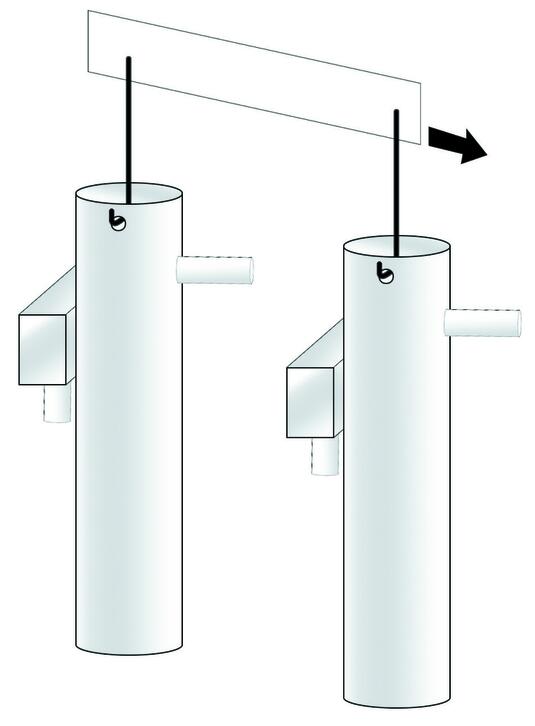
Parts to coat analysis
The 1st STEP is to analyze the parts to coat.
Depending on the shape and the area to cover with paint it will influence on the movements to implement and the number of atomizers to use.
The hanging method and the movement in the production line are also important to consider.
Is the location of the part constant and precise ?
Yes => I can implement an automatic system
No => I need to analyze how to control the position (hanging modification), or detect the position and the shape of the parts (3D scan)
Is there a movement (conveyor) or a fixed position ?
If there is a conveyor movement then I can use it to generate a coated surface while combining with another movement perpendicular to the conveyor direction
Is the size of the parts variable ?
I might need to add another movement (gauge) to adapt the spraying distance to the parts
What is the pitch of the line (distance between 2 parts) ?
this information will give me the process time (ex: 2m pitch with a conveyor speed 4m/min gives 30s maximum of process time)
How long do I need to coat 1 part ?
Check the surface (m²), the thickness to apply (µm) then figure out the total volume to apply (cc).
Depending on the process time available (s) this volume will give you the number of atomizers to consider based on their recommended application paint flow rate in cc/min.
Flat parts can be coated with 2 axis movements (conveyor + reciprocator).
If I need to coat 2 sides, then I can implement a 180° rotation in the process and coat the 1st side with 1 set of applicators, then the 2nd side with another set of applicators.
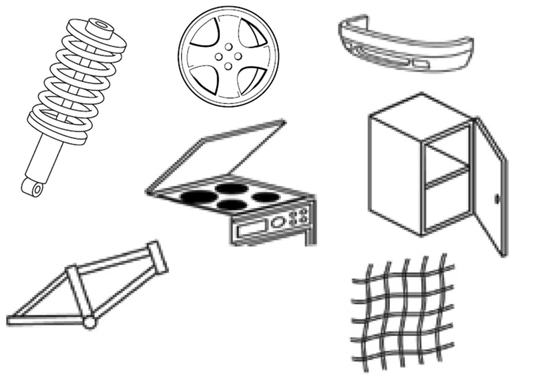
Complex machines can be splitted in several parts to be coated. Height of the part will give the vertical stroke of the reciprocating movement, width will give the gauge stroke of the 2nd axis. Line speed might need to add a tracking axis to complete the coating process of each part.

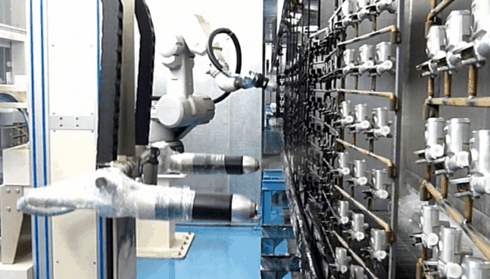
Smart automatic concept
The most economic analysis will adjust the number of axis exactly to the part typology.
For instance, usually 80% of a surface can be coated with a limited numbers of axis (1 or 2), then the rest of the process can be done manually in a first step to limit the TCO, then it can upgraded to a robotic solution.
Example: we coat 3D parts from 1 side only with only 1 reciprocator holding 2 atomizers on a 2m support.
The 1st atomizer is coating the front side, then the conveyor will 180° rotate the jig holding the parts and the second atomizer will coat the back side. Then finally a 6 axis robot will make a touch operation to finish the job.

Coating Process
Check the paint and the quality requirements on the part.
Paint application shall be recommended by the part manufacturer or the material supplier.
If very high finishing quality is required, then Airspray or Electrostatic bell shall be selected.
For productivity with good finishing quality, then Airmix shall be selected.
For maximum productivity and high thickness coating (>50µm per layer) with low quality requirement, Airless is recommended.
See the table to get more indications.

Electrostatic is possible ?
With our AP1000 check the paint resistivity.
If it higher than 5MOhm.cm then an electrostatic process is possible.
If it lower than 5MOhm.cm or even conductive, electrostatic process is still possible but with specific devices and installation care.
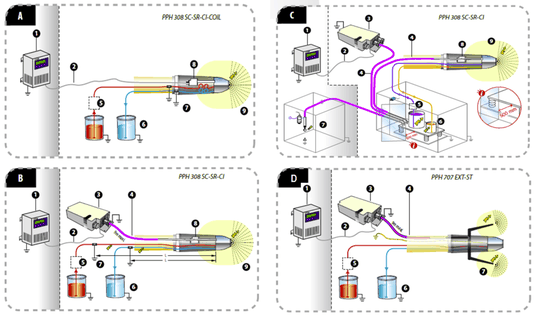
Select the right electrostatic Antenna
Antenna A: high resistivity solventborne paint (>10MOhm.cm) with internal charge process
Antenna B: low resistivity solventborne paint (>5MOhm.cm) with internal charge process
Antenna C: waterborne paint with internal charge process
Antenna D: waterborne paint with external charge process
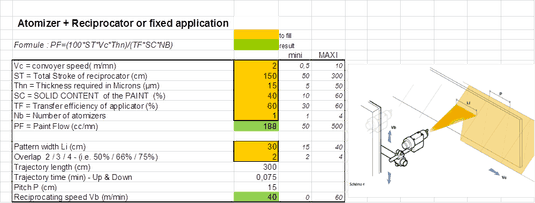
Antenna detailed design
Get the Sames configurators, input all the process data and then design :
- the atomizers type,
- the atomizers needed quantity,
- the application paratmeters

Successful automatic line conversion
Converting an existing manual line to an automatic process is usually the most competitive solution to adress :
- production output increase,
- CPU (cost per unit) reduction,
- quality increase (controlled and constant quality)
It is common to tink investing in a total new line or even new factory when existing assets can be upgraded.






